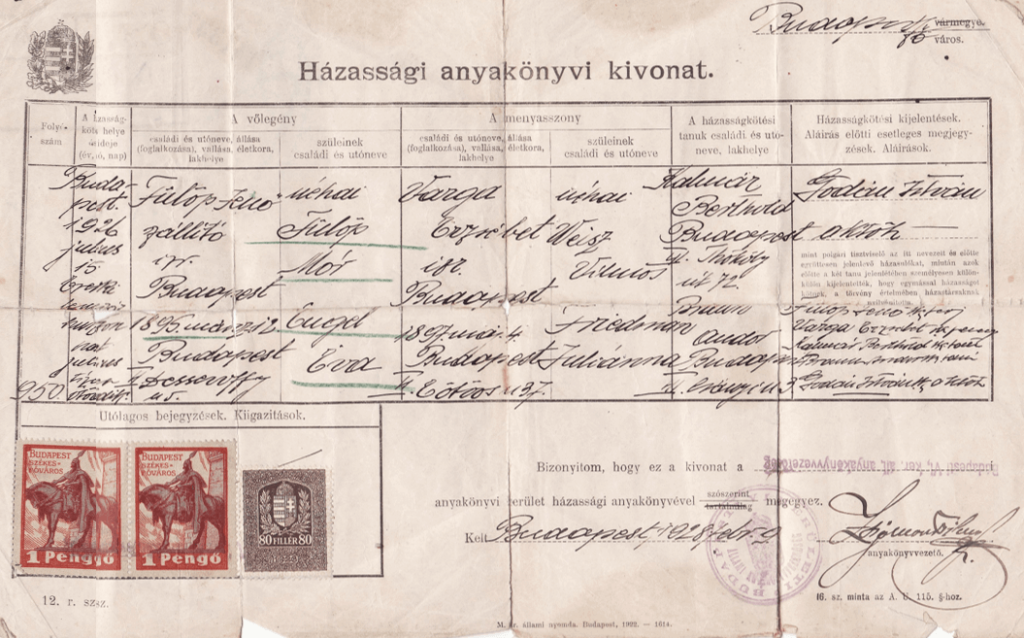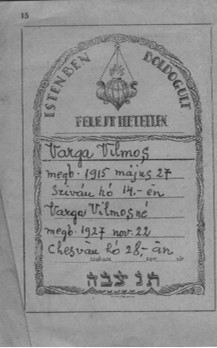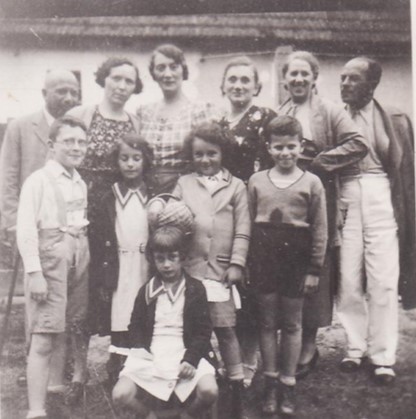How can civil records be used to aid genealogy research and family tree construction?
What is Genealogy? What is Family Research?
The definition of history is (according to Wikipedia): a study of past events according to written documents.
In this article I will try to describe the life trajectory of a person in terms of the genealogy research for building a family tree. In the context of genealogy research, there is an attempt to trace the trail of documents and evidence that are preserved per a name. These describe the life of the subject of the study. In this article I will refer to the period before the Internet age, as the Internet is a major revolution in the field of event documentation.
A person’s life leaves marks. Signs set by the systems in the environment of that person’s life, but also marks set by himself and what he leaves behind for others. Genealogy research uses these signs. These are various documents established by the culture and systems of government in a person’s place of residence, in order to describe the course of an individual’s life. Civil records: Refers to birth, marriage and death records. These form the basis for genealogy research and the construction of the family tree.
What details can be found in a Birth Registration or Birth Certificate?
A person’s birth record contains various details about his environment: place of birth, names of parents, parents occupations, their ages at the time of the birth, religion and place of birth, dates of birth and circumcision (for Jewish men), name of midwife and names of witnesses and Mohel. After these details were registered there are cases in which a note to this birth register was added. This can be a note about renaming, death and more.

What details can be found in a Marriage Registration or Marriage Certificate?
This is the second stage in a person’s life trajectory through civil records. this register would note the following details: Date and place of marriage, place of registration of marriage, place of birth of the couple, their age, occupation, address, religion, names of the parents, name of the spouse and their details and witnesses to the event. Additions of comments can contain additional details about: renaming, termination of marriage, conversion, various registration amendments and even special statements – see below “Additional examples” *.

What details can be found in a Death Register or Death Certificate?
The civil registration regarding the end of a person’s life usually contains: place of death, date of death, religion of the deceased, names of spouses (if any), names of parents, cause of death, age at time of death and name declaring or bringing for burial. Here, too, there is room for various remarks.

What details can be found in comments and additions to civil records?
In the appendices and notes to the civil records, as described in this section, you can find details about events such as: name change, termination of marriage (divorce), registration corrections and various other details. For example, in the birth record of my grandfather (on my father’s side) who was born in 1895, a later note from 1945 was added about changing his name. The comment box is free text and any event or score defined by the government at the time is recorded there in various forms.
Another example. In my grandfather’s marriage register from 1929, a note was added in 1938. In that year, laws called “laws against the Jews” were enacted in Hungary. The note added to the marriage record emphasized that the groom had served his country in the Great War (World War I) and was even wounded in defending the homeland. This registration apparently came to facilitate the particular person when the government came to implement the law against the Jews.
*Other examples: an addition to the birth registration for the child being adopted by another person, an addition that clarifies that the registration contains a spelling and correction error, an addition regarding the termination or dissolution of a marriage, conversion and more.
These three types of civic records: Birth, Death, and Marriage, form the basis of genealogy research and form a significant tier in the construction of the family tree. In addition to the civil records, each state maintained different data on its nationals in other ways.
About this in the following parts of the article.
Zvika Oren, Genealogy specialist
Research and Build Family Trees
Over the years I have gained knowledge and experience in various areas of genealogical research: searching records, deciphering documents and tombstones, conducting personal interviews, discovering genealogies, contacting relatives and people with relevant knowledge, collecting findings and organizing them, transferring documents and photos to digital media (including making backup copies) , As well as the production of a family book (Hebrew or English) based on the material collected.
As part of the genealogy research and family tree building, I collect data and search for more data and information in digital information sources: Yad Vashem databases, search engines, locating tombstones, various archives, immigration records, documents regarding name changes and more. I have conversations and interviews with people for the purpose of genealogical research. At the end of the data collection I process information related to the relevant root research. And everything – to discover the genealogies and to collect the documents and photos, to document the preservation and construction of the family tree.







